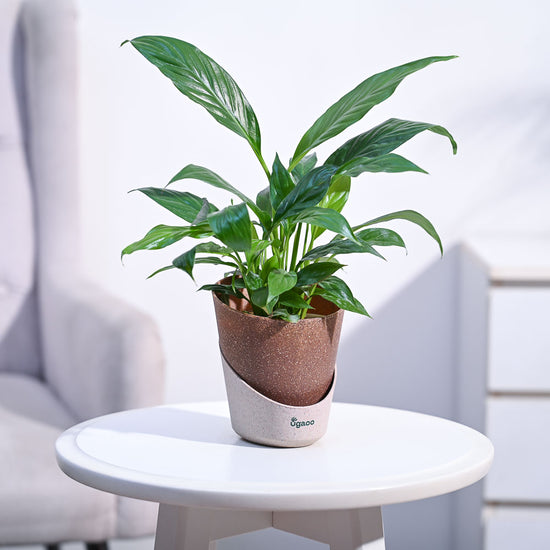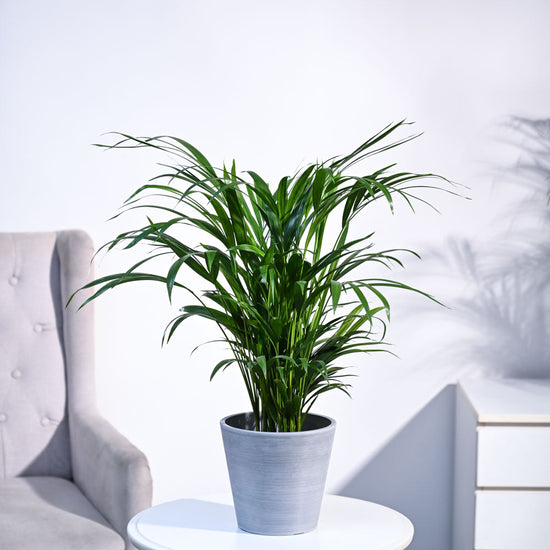●Oxygen Giving Indoor Plants: Buy the Best for Your Home
Oxygen plants are renowned for their ability to purify a space and make it more healthy. These plants bring you the best of both worlds with their stunning aesthetics and unparalleled ability to produce oxygen all through the day and night. Whether you’re looking for the perfect plants for your home or office settings, these oxygen giving indoor plants will not disappoint!
●Benefits and Uses of Oxygen Plants: What Makes Them So Beloved
As the name suggests, oxygen plants are known for their unparalleled ability to produce oxygen 24/7 and purify the air around them. This adds greatly to their charm and allure, making them popular choices as indoor plants everywhere. These days, bedroom oxygen plants are a common sight in homes, uplifting decor in the spaces where people relax the most.
So, let’s look at some benefits of oxygen plants!
1. Air Purification
These plants release oxygen after helping to purify the air by absorbing carbon dioxide during photosynthesis and releasing oxygen as a byproduct. This process improves air quality and creates a healthier living environment for humans and pets.
2. Improved Respiratory Health
The increased oxygen levels provided by oxygen plants can have positive effects on respiratory health. Breathing clean, oxygen-rich air can significantly reduce the risk of respiratory diseases and also improve lung function, particularly for people suffering from conditions like asthma or COPD (Chronic Obstructive Pulmonary Disease).
3. Better Cognitive Function
Healthier, oxygen-rich air can improve cognitive function and boost mental clarity. Countless studies have shown that increased oxygen intake can enhance concentration, memory, and overall brain function exponentially, leading to better productivity and performance overall.
4. Great for Better Relaxation and Well-Being
Oxygen-rich environments created by oxygen plants are often associated with feelings of relaxation and well-being. Spending time in areas with abundant oxygen can help reduce stress, anxiety, and fatigue, promoting a sense of calm and tranquility.
●Types of Oxygen Plants: Grow What You Love
Different types of oxygen plants can cater to your different needs in terms of home decor and size requirements. So, here are a few oxygen giving indoor plants that will do great in almost every space that you choose to keep them in:
1. Snake Plants
The
Snake Plant is a stunning, hardy succulent that can grow well no matter where it is placed. So, whether you choose to make this your bedroom plant or display it in your living room, Snake plants are great indoor companions that will give you oxygen 24/7.
Where to place it according to Vastu: In the East, South, and Southeast corners of the house.
2. Spider Plants
Spider plant is another one of the easiest oxygen plants to grow indoors. These plants are hardy and can also grow just about anywhere. With their long, slender leaves and light green leaves with white-cream borders, Spider plants are also great lookers and are easily propagated from their small, baby plantlets.
Where to place it according to Vastu: North, East, Northeast or Northwest corner of the house.
3. Aloe Vera
Aloe vera is a well known and beloved plant, often brought in the limelight because of its medicinal properties. While a lot of people know about its abilities to heal cuts and prevent the skin from sun-damage, few know that it is also a great oxygen giving indoor plant. It can sit indoors and grow well with the right kind of care, providing you with cleaner and more oxygen-rich environments to relax & rejuvenate.
Where to place it according to Vastu: In the East or Northeast direction to attract positivity in the house.
4. Peace Lily
Peace Lilies give you the best of both worlds: they’re flowering oxygen plants! With beautiful, tapering leaves of a glossy dark green and pearly white flowers, Peace Lilies are the perfect indoor companions to promote healthier living and a cleaner, more oxygen-rich environment.
Where to place it according to Vastu: There is a lot of flexibility with direction with this plant. It can be placed facing almost anywhere and is best kept in bedrooms. Can also be kept near South or West-facing windows.
5. Areca Palm
Areca Palm plants are a type of palm that do very well indoors and have a relatively fuss-free attitude. They are absolute lookers with their long, tapering fronds on lengthy branches. Much like many palm plants, Arecas need the right kind of care as well. These are one of the best and highest oxygen producing plants to keep indoors, an ability that adds to their charm greatly.
Where to place it according to Vastu: In the East, Southeast, South or North-facing direction.
6. Aglaonema Plants
Aglaonema plants are stunners when it comes to aesthetics and their countless varieties add to the long list of reasons why everyone loves having them indoors! These oxygen plants are great for almost every space indoors, adding a colorful vibrancy everywhere they go. These are also a few of the best indoor plants for oxygen production all through the day and night!
Where to place it according to Vastu: Should be placed near an East-facing entrance.
●What Makes Us Special: Why Buy From Ugaoo?
At Ugaoo, we understand what it means to be a plant parent. We believe in the sheer beauty and joy that tending to your garden brings. Moreover, we also understand how important it is to have the right kind of introduction to the world of gardening. So, we bring you the best of the best to ensure a seamless gardening experience, whether you’re a seasoned gardener or a beginner.
We care for our plants with the best in class technology, the right kind of
fertilizers, and individual attention for each of them based on their needs. With our plants, we aim to create a portal to the world of gardening that will leave you wanting to discover more about the beauty of the nature these plants bring indoors to us. At Ugaoo, we aim to create a world that yearns to rediscover the beauty of nature and connect with it on a soul-level.
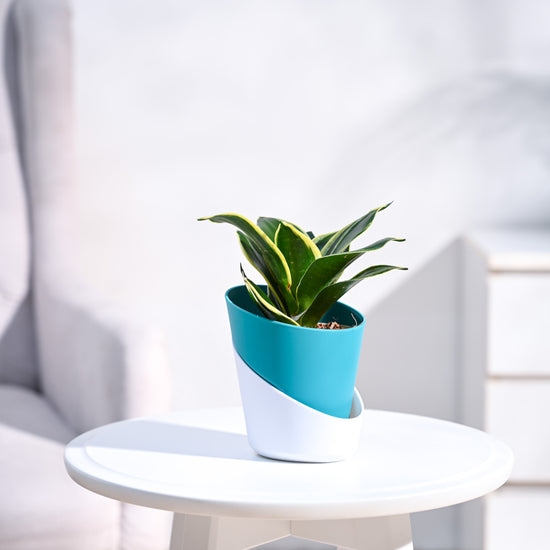 Snake Plant - Golden Hahnii
Snake Plant - Golden Hahnii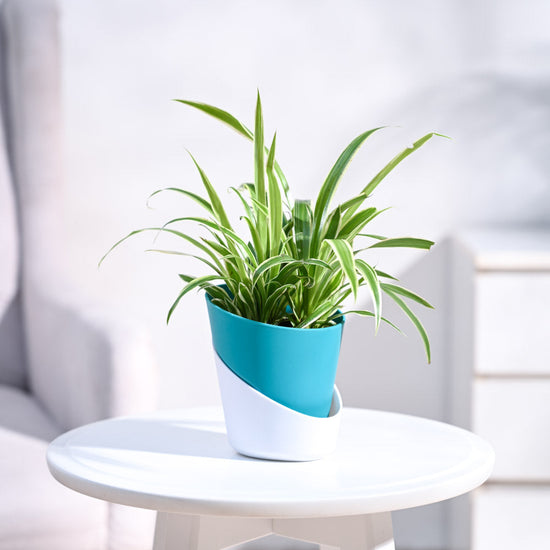 Chlorophytum Spider Plant
Chlorophytum Spider Plant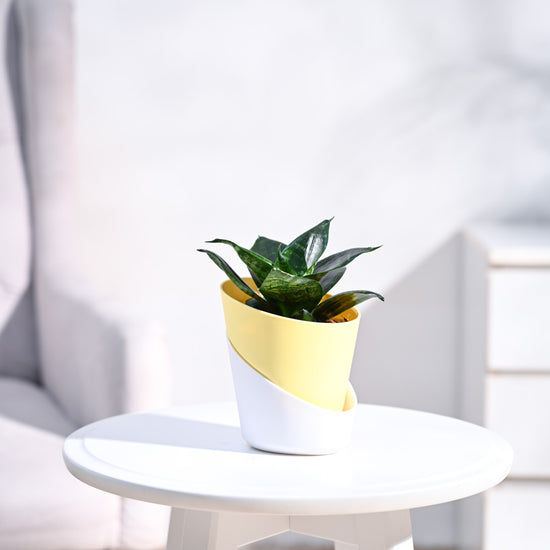 Snake Plant - Green
Snake Plant - Green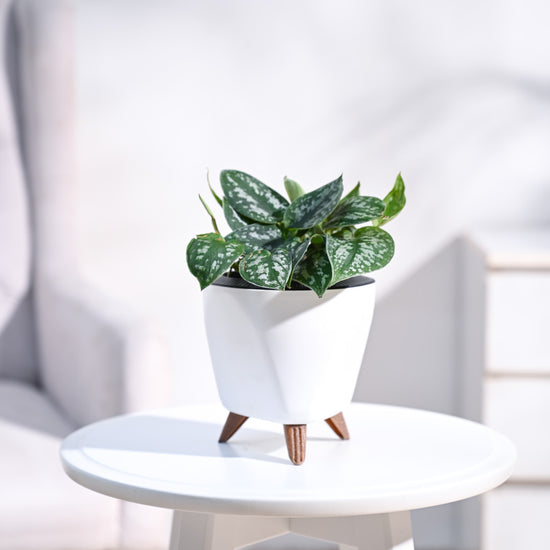 Satin Pothos Argyraeus
Satin Pothos Argyraeus
